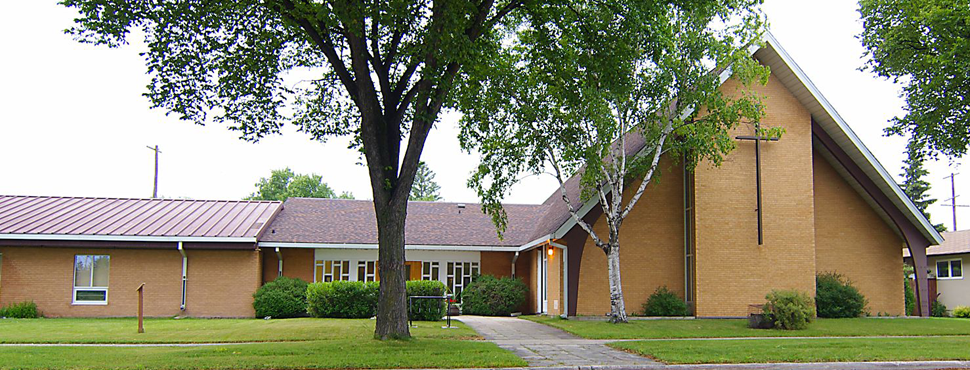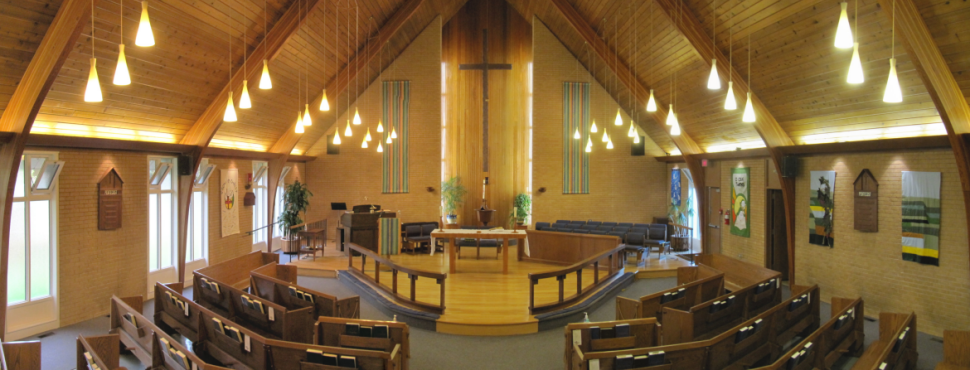April 14, 2017
Good Friday
April 14, 2017
Mary Holmen
John 18:1 - 19:42
The liturgy we are about to celebrate has three major parts. First, we gather and proclaim the Word of God. Throughout Lent this year, we have been reading from the Gospel according to John, and we continue in that direction today. Our first hymn is a precis of John’s Prologue, “In the beginning was the Word”, summarizing the life and work of the Word made flesh, come to live among us to reveal God’s glory. The core of the Proclamation is the Passion narrative. I’ll get back to that in a minute. Following the Passion, we join in the high-priestly work of Jesus and pray for the church, the world, and all in need, this year using the Great Litany as our framework. Finally, we will join in meditating on the Cross of Jesus, as we reflect together about the meaning of his life, death, and resurrection, not only for ourselves, but for the whole universe.
As I said, our Gospel readings throughout Lent this year have been taken from the Gospel according to John. Today we continue as we hear and tell John’s story of Jesus’ arrest, trial, torture, death, and burial.
There are, of course, accounts of Jesus’ last days in all four gospels. As Donna said in her sermon about Palm Sunday, each gospel tells the story, sometime in slightly different and sometimes significantly different ways. What each account includes that others don’t, and what each account omits that others include, are important details that we need to pay attention to.
The three Synoptic gospels, Matthew, Mark, and Luke, are substantially in agreement with each other. The word Synoptic means “seeing with the same eye”. In those three accounts of Jesus’ passion, Judas kisses Jesus as a way of identifying him to the soldiers and police in the darkness of the garden. Jesus is arrested and taken away. When asked by Pontius Pilate, “Are you the king of the Jews?”, Jesus replies, “You say so.” When Jesus is led out to be crucified, the cross is laid on Simon of Cyrene. But even these three narratives differ in important ways. In both Matthew’s and Mark’s telling, Jesus, from the cross, utters only the cry of desolation, “My God, my God, why have you forsaken me?” and dies with another wordless cry. It is an experience of utter abandonment. In Luke’s account, Jesus asks God to forgive his executioners, promises paradise to the repentant thief, and, at the moment of death, commends his spirit to God. It sounds almost serene.
John’s account of the passion is different again. First, there is the timing. The Synoptics put Jesus’ death on the day of Passover; in their theology, Jesus’ death is God’s action to deliver the people from their slavery to sin and death. John places it on the day of preparation when the Passover lambs were slaughtered, and we recall how John the Baptist identified Jesus as the Lamb of God. Rather than being captured, Jesus steps forward and surrenders. John tells us, “Jesus, knowing all that was to happen to him, came forward and asked them, ‘Whom are you looking for?’” When they say, “Jesus of Nazareth”, he replies, “I am he.” In fact, the Greek text simply says, “I am” – the name of God, the name God revealed to Moses in the burning bush. “Whom are you looking for?” “I am.” And we recall how the crowds were ready to stone Jesus for saying, “Before Abraham was, I am.” And the soldiers fall back as though hit by a wave of energy at the power of the divine Name.
The differences continue. When questioned by the High Priest, Jesus retorts that they should ask the people what he said; he has nothing to hide. When the police officer strikes Jesus on the face, Jesus challenges him, “Why did you hit me?” At his trial before Pilate, Jesus stands up to Pilate, demanding to know who said he was King of the Jews, stating his kingdom is not of this world and that he has come to testify to the truth. When asked, he refuses to tell Pilate where he comes from, and finally he tells Pilate that he, Pilate, would have no power at all if it hadn’t been given to him from above.
In John’s gospel, Jesus carries his own cross to the place of execution. From the cross, he arranges for his mother’s security and his friend’s responsibility with quiet authority. When he says he is thirsty, it is to fulfill the scriptures. Finally, John says Jesus “hands over” his spirit. He does not simply expire; the same word is used to describe Pilate’s handing over of Jesus to be crucified. Jesus is active, even at the moment of his death. He is in charge. He is in control.
Throughout John’s gospel, Jesus has been moving steadily and inexorably toward his “hour”. Early on, he says over and over again, “my hour has not yet come”. At the end of his public ministry, when some Greeks, i.e. gentiles, approach wishing to see Jesus, he says, “Now the hour has come for the Son of Man to be glorified...and I, when I am lifted up, will draw the whole world to myself.” Jesus’ “hour” is the time of his glorification, when he is lifted up on the cross in death, lifted up in resurrection, bestows the Spirit, and returns to God. It is all one hour, one event, one act of love poured out.
So which way was it? Is one gospel right and the others wrong? Was Jesus the helpless victim of an unjust arrest, a corrupt trial, torture, and shameful death? Or was his passion really his action? Was he humiliated or was he glorified? I think the answer is both. The gospels are giving us theology, not biography. John is telling us his theology of the whole life, ministry, death, and resurrection of Jesus. “He came to what was his own, and his own people did not accept him. But to all who received him, who believed in his name, he gave power to become children of God.” The greater the humiliation, the greater the glory; the greater the weakness, the greater the power. In the figure of this weak, beaten, tortured and mocked man, we see the true glory of God. Yes, Jesus suffered an unbearable, agonizing, and shameful death. But he went to that death willingly and intentionally. In what appears to be the ruins of his ministry, forsaken by all but a few followers, is the grain of wheat which, when it dies and is buried, bears a rich harvest. And historically, John was right. The authorities of Jesus’ day thought they could snuff out this annoying spark that challenged the world of power and domination. Instead, they ignited a blaze that changed the course of human history and launched a movement that will always and forever stand against domination, violence, and power-over; will always and forever stand for the power of self-giving, self-sacrificing love.
And what does this mean for us? Today is not a funeral for a dead Jesus. That’s why this liturgy is called the Celebration of the Lord’s Passion – not celebration in the sense of throwing a party, but the solemn recollection of the suffering that gives us life, just as we “celebrate” the Eucharist week by week. Jesus did not die to show us how to die; he died to show us how to live. He taught us that what looks like weakness from the point of view of the world of domination is true power and glory from the point of view of the world which God is making new. All the losses and small deaths we experience in our lives – whether that be letting go of the desire to dominate others, moving away from a beloved home, letting our children make adult decisions with all the risks that entails, accepting care when we have been the caregiver – all these are practice and preparation for the great and final letting go of those we love and of life itself. Jesus dies with the words, “It is finished” on his lips. It is accomplished. It is complete. His work is done. As he rested in the tomb until the third day, may we await with him our own hour, confident that, in him, our weakness will be transformed into his glory.


